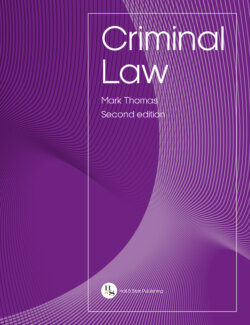Читать книгу Criminal Law - Mark Thomas - Страница 70
На сайте Литреса книга снята с продажи.
2.4.2Positive acts
ОглавлениеA positive act is an action taken by the defendant in relation to specific conduct. For example, the acts of stabbing another and stealing a bottle of whisky from a supermarket are positive acts. Both of these examples show a circumstance where the positive act is ‘direct’, in that the defendant has physically and personally undertaken such conduct.
Positive acts, however, can also be indirect. See, for example, the case of DPP v K (a minor) [1990] 1 All ER 331, where a schoolboy placed acid that he had taken from the science lab into a hand-drier in the boys’ toilets. The victim, another pupil, used the hand-drier and was scarred by the acid. The Divisional Court held that the application of force need not be direct, but may also be indirect.
A second example is that of R v Martin (1881) 8 QBD 54. In this case, the defendant, upon placing an iron bar across the exit of a theatre and turning out the lights to that stairwell exit, shouted ‘fire’, which resulted in the injury of several people. The defendant was charged with inflicting GBH contrary to s 2 of the Offences Against the Person Act 1861, which the defendant argued could not be committed by an indirect act. The Court for Crown Cases Reserved ruled that an indirect application of force was sufficient to establish liability for GBH. There was no requirement for ‘face-to-face’ contact.
